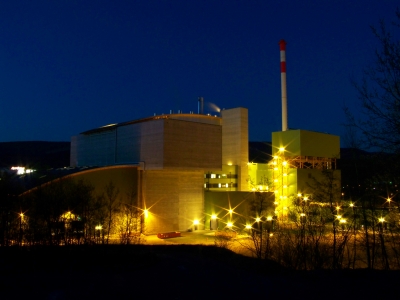According to a study by Equanimator Ltd., municipal waste incineration generates more than 12 million tons of slag and about 2 million tons of air pollution control residues.
Moreover, incineration and combustion of all wastes generates between 28.4-31.8 million tonnes of residues annually. This is equivalent to between 12.6% and 14.1% of the quantity of municipal solid waste generated.
According to the report, between 11.3 and 16 million tons of incineration residues are sent to landfill each year. However, the claim is that incineration eliminates the need for landfills and that the associated residues are recovered. Municipal waste incineration accounts for approximately 6.4 million tons of this total. The remaining slag is used for road construction or other construction-related activities. Residues from air pollution control are used to fill salt mines.
There are valid concerns about whether this should be categorized as a recovery activity. Today, it frequently is. The question also arises if it could result in the movement of waste across boundaries while being mischaracterized as a recovery operation. The report also discovered substantial problems in countries’ reporting of the actual fate of incineration residues.
A greater examination of this reporting’s accuracy may be necessary, even though the majority of bottom ash is reported as being non-hazardous. This confirms the conclusions of recent independent empirical research evidence that incinerator bottom ash is insidiously hazardous and insufficiently regulated.
ZWE’s Climate, Energy and Air Pollution Programme Coordinator, Janek Vahk, said: “Contrary to the industry narrative, waste incineration generates large quantities of hazardous and non-hazardous residues that are often landfilled, or used in “backfilling” operations that, in any case, fill some landfill space and incur substantial costs of handling.”
The study warns that, if in meeting a 65% municipal waste recycling target, all not recycled wastes were incinerated, the quantity of residues generated from incineration would be on the order of 8% of municipal waste generation.
As a result, in accordance with EU policy and the circular economy agenda, landfill minimization should be pursued by minimizing residual waste (i.e., reduction, reuse, separate collection, composting, recycling, and ongoing redesign of goods, packaging, and services) rather than incineration, which, in addition to producing significant amounts of materials to be landfilled, may also cause operational lock-in, thereby impeding efforts to minimize residual waste.
Finally, the study questions the reasons for treating waste incineration residues from R1 incineration (energy recovery) differently from mechanical biological treatment by excluding only the first from the calculations of the quantity of landfilled municipal waste.
The Landfill Directive contains an unbalanced provision that permits the full deduction of all residues from the amounts of waste landfilled from waste incinerators classified as R1 (recovery operation) – including ashes and slags sent to landfills – which overly rewards the potential effect of using R1 incineration as a “landfill minimisation option.”
Janek Vahk added: “This paradox is even stretched to further unbalanced mechanisms, given that rejects from sorting operations and from operations prior to reuse (which will have to be at the core of EU strategies for the management of waste) will be reported as “landfilled”, while this is not the case for landfilled ashes from incineration.”
In light of this, Zero Waste Europe advocates for the equality of treatment to mandate that all residues resulting from municipal waste recovery operations that are subsequently landfilled be treated on an equitable basis.
This could be achieved by:
- Changing the target so that the residues are also excluded from mechanical biological treatment; or
- Amending the target to include all residues from incineration (both R1 and D10 (disposal incineration)) that are landfilled; or
- Re-specifying the landfill target (first and foremost, having it replaced by a target to cap residual waste generation) to ensure that management of residual waste delivers the most beneficial outcome. In ZWE’s opinion, this should be pivotal in the ongoing revision of the waste directives, to minimise all “leakages” of resources from circular management, instead of simply redirecting such leakages from landfills to incinerators.











